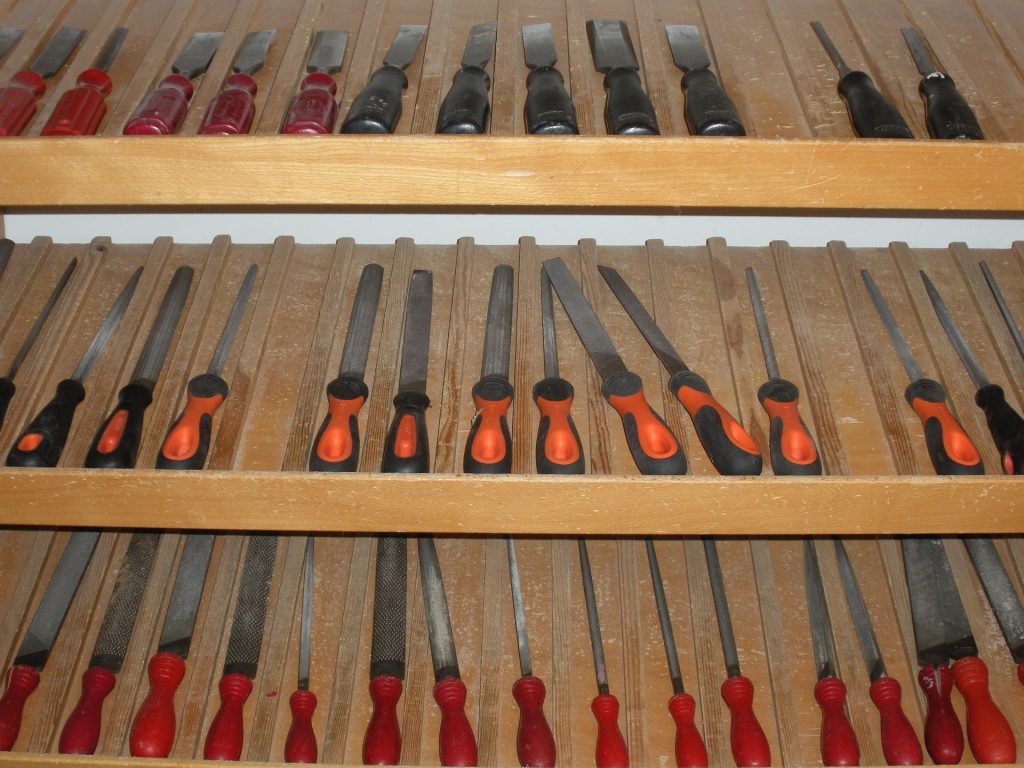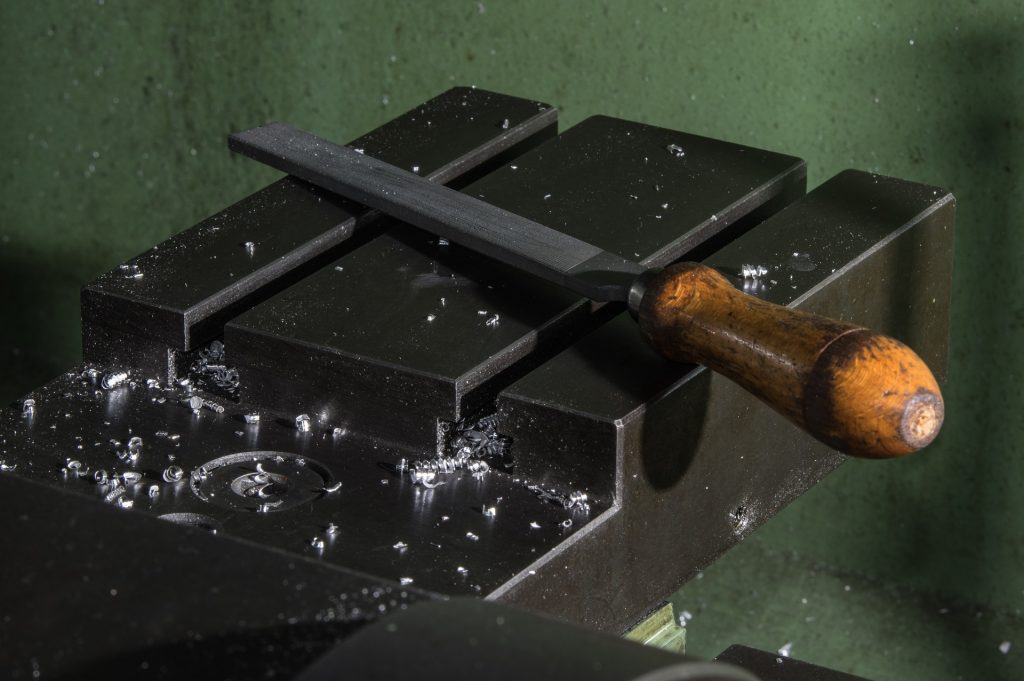Spend too much time tinkering with classic cars and before long it becomes necessary to move beyond changing spark plugs and spannering. Eventually you may want to start making stuff. Working with metal and understanding the properties and uses of the different types isn’t rocket science (at least not at classic car level) and a basic level of metalworking with hand tools is not only incredibly useful but fun and immensely rewarding, especially in one of the most common materials used to build cars: steel.
These days, the tendency is to pick up a machine tool like an angle grinder to hack and butcher steel around but that’s not much use for anything requiring a modicum of accuracy. It’s also a pretty horrible way to do things and very messy. Files are among the most underrated group of metalworking tools and the right type used in the right way is unbeatable for what it’s designed to do.

I keep my files, knives and hacksaws in the same drawer because they are all cutting tools. Files are not to be confused with sandpaper; they have teeth which cut the metal when drawn across it. Files are made from high carbon, hardened steel and can be used on any metal except high carbon, hardened steel.
Browse online and you’ll find random arrays of files which are apparently much the same with different colour handles. But the real deals have names and specific uses. What’s more, they have ancient and glorious names to enjoy while using them too. In a metalwork shop there are two staple files I was taught to use as a kid, and I still use them today.

One of these goes by the wonderful name of the bastard file (no kidding). The name refers to the coarseness of the teeth and comes in a number of different cross sections. There’s my favourite, the flat engineer’s bastard file, along with the round bastard engineer’s, the half-round, and so on. On the coarseness scale, the bastard sits between the coarse and second cut file.
The second cut file is my other staple workshop file and probably most used most as it can produce a decent finish on steel if used correctly. Below the second cut is the smooth cut file. These files are double cut, so teeth are cut at a diagonal and then again on the opposite diagonal to create diamond-shaped teeth. Files get blunt with age and can be ruined by trying to file hardened steel. That needs a grinder of some sort.
How should they be used? Let’s just say you’ve cut a square from a sheet of mild steel. Grip the work piece in the vice using soft vice clamps to avoid chewing it up, with the edge just protruding above the surface of the jaws so the piece remains rigid and doesn’t ‘give’ when the file’s teeth bear down on it.
Stand in front of the vice holding the handle of the file in your dominant hand and the other hand, holding the end of the file from the top, with fingers bent around under the tip and thumb on the surface of the file. This grip gives good control of the file, helps you keep it dead flat and file a straight edge. Now start filing at an angle to the job so with each stroke, the file moves from one end to the other of the edge being filed. At the end of the stroke, lift the file and start again.
File steadily and evenly and you’ll be surprised at how quickly the material comes off. Don’t be tempted to scrub away forwards and backwards, the result will be uneven, messy and won’t be any faster. If you’re making an accurate shape, use a metal scriber and metal-working tri-square to mark the line you want to file to and keep an eye on progress as you go along. The proper way is to swab the surface of the steel with ‘engineer’s blue’ a blue, alcohol-based dye first, so you can see the scribe mark clearly.

Do it right and you should find the edge is dead straight with a steel rule laid along it. Why bother? If you’re making anything to fit properly or just look professional then it’s essential. Apart from anything else, it’s good craftsmanship and making something well is a pleasure money can’t buy.
Now, having got that straight edge, you may want to take out the file marks if finish is important and the way to do this without rounding the straight edge off is by draw filing. Hold the file at 90 degrees to the edge being filed, then draw the file forwards and backwards this time, along the length of the work piece. Draw filing will give a smooth finish and if the edge is wide, will keep the end result square.
Files are inexpensive and a modest selection will cover most jobs in the workshop. Stock up with flat, half round and round files in both file cuts and smooth if you want. A good size to go for is around 250mm (or 10 inches long in old money), and handles can be either plastic or wood. My preference is wood – it lasts forever and is comfortable in the hand.
Buy fine quality engineers files from a tool supplier (you’ll find these files listed by name) and avoid a cheap set in a plastic bag from a DIY store. If you come across a job where it looks as though a different shape file will help, add it to the collection. Good quality files are fabulous things, invaluable, and only cost a few pounds.
Read more
Socket Set: Why rebuilding brake calipers shouldn’t be a dark art
Reviewed & Rated: Rust converters
Five must-have mods for your classic car










All good advice. But you try to buy a decent file these days…all of the “proper” engineering names seem to have disappeared. Eclipse, Elliott etc. Cheap imports are shite. And by the way “sandpaper” goes at the bottom of a budgies cage. You obviously meant “glass paper” or “abrasive paper” eh ?